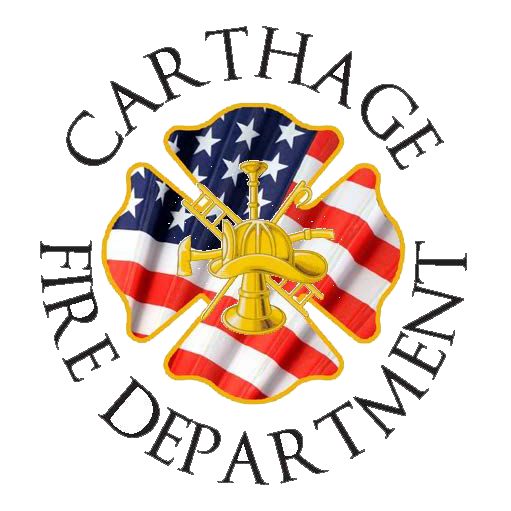Storm Safety
Storm & Tornado Safety
Don't wait until storms arrive to prepare for severe weather! Here's how you can prepare to protect yourself, your family and your property.
Step 1: Get Indoors
Carthage Fire Department recommends purchasing a battery-powered NOAA all-hazards weather radio which activates when it receives a radio signal from the National Weather Service. These radios can be kept in your vehicle, in your home, or carried while camping or attending outdoor events to alert you to severe weather in your area.
To provide additional warning to people who are outdoors, Carthage operates 9 outdoor warning sirens that sound during severe weather events. You may not hear them inside as air conditioning, thunder, wind, rain and other conditions can drown out the sound. Sirens are activated for:
Hail greater than 1 inch in size
Winds greater than 70 mph
Tornado warnings from the National Weather Service named Carthage in the path.
Being outdoors is the most dangerous place to be during a lightning storm. If a storm is approaching, go indoors or take shelter in a hard-topped vehicle. If you can hear thunder, you are within striking distance of lightning.
Step 2: Find Shelter
When a severe thunderstorm warning is issued, take shelter indoors immediately. Stay weather aware and be prepared to find shelter inside a designated safe space as thunderstorms can produce a tornado with little or no warning.
Tornado Safe Spaces
Homes and small buildings: Go to an interior room on the lowest level, such as a closet or bathroom. Stay away from windows, doors, and outside walls. Crawl under a sturdy surface, such as a heavy table or desk. Cover yourself with thick paddings, such as blankets or a mattress. Use your arms to cover your head and neck to protect against flying debris.
Schools, hospitals, factories, and shopping centers: Go to interior rooms and halls on the lowest level. Stay away from glass enclosed places or areas with wide-span roofs, such as auditoriums and warehouses. Crouch down and cover your head and neck. Centrally-located stairwells are good shelter.
Cars and mobile homes: Most storm-related deaths occur in cars and mobile homes. If you have advanced warning of impending storms, leave them and go to a substantial structure or shelter.
No suitable structure: Lie flat in the nearest ditch or depression and use your hands to cover your head. Be alert for flash floods!
Step 3: Seek Information
The best source for weather warnings is an NOAA all-hazards weather radio which activates when it receives a radio signal from the NWS. You can put the radio near your bed to wake you up if you're asleep, and there's adaptive technology available for people with vision or hearing impairments. View NOAA radio frequencies.
Backup options include:
A smartphone app like the "Emergency" app from the American Red Cross
Television news, AM-FM radio or an online news source
